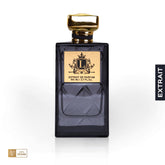What are EDP, EDT, and EDC? What Are The Differences?
Perfume is a word that comes from the French and means a good smell. Almost all of the perfumes branded in the world from the past to the present have been produced in France. For these reasons, France can also be considered the homeland of perfumes.
The aroma in a fragrance mostly consists of flowers, spices, fruits, tree roots, resin, leaves, and some animals secretions. Each fragrance has its unique formula and even a note. According to the proportions in the formula created, the aromas are combined, and the fragrances we use are formed by adding the last alcohol and water. But a perfume that occurs is not immediately tested and released, and put on sale after receiving approval. To be tested once again, the perfume goes through an aging phase of approximately three months to 7-8 years, that is, waiting and resting. After this universe, it is retested by a perfumer with a high level of olfactory ability. A bottle design is made that reflects each fragrance's own unique and own brand, and after the fragrance is filled in the bottles, it is packaged and sold.
What is the difference between EDP, EDT, and EDC?
The difference between Pure Parfum, Eau de Parfum, Eau de Toilette, and Eau de Cologne determines the percentage of aroma concentration, alcohol, and water used. Perfume is also classified according to these percentage rates.
Pure Perfume
Pure Parfum contains mostly 20% to 40% aroma concentration and has the durability of pure perfume for about 6 hours or longer according to the skin. The most expensive is pure perfumes, and these specially produced perfumes are used with a very small amount. They are the highest quality perfumes.
Eau de Parfum (EDP)
It usually consists of about 10% to 30% essence. It states that the ratio of alcohol and water in EDP is less than EDT and EDC. It has a time of about 4 or 5 hours. Because of the higher percentage of aroma in it, it is also more expensive than EDT and EDC and is closer to pure perfume in quality.
Eau de Toilette (EDT)
It contains 5% to 10-15% aroma essence and contains more alcohol and water than EDP and less than EDC. It shows endurance in the skin for approximately 2 to 4 hours. EDTs are sold slightly cheaper in perfumeries than EDP.
Eau de Cologne (EDC)
As the name implies, they are close to Cologne but stronger than Cologne as an aroma essence. EDCs have concentrated substances of 3% to 5%. Skin stay time is around 2 hours. They are also cheaper due to the persistence time and the ratio of essences in it.
Although each smell flies from each skin close to their generally specified average time, in some cases, it may also vary in endurance times due to the difference in the skin or depending on the area used in the skin.
It is mainly produced in Eau de Toilette, along with the Eau de Parfum fragrance of each brand, and besides, some perfumes vary depending on the season, while some perfumes can be used in all seasons. For example, Trésor, issued by Lancome in 1990, and allure, produced and released by Chanel in 1996, are used in all seasons, while Angel brand perfume, which has been sold by Thierry Mugler since 1992, is the perfume of cold weather, that is, winter months. In short, when buying perfume, it is necessary to choose according to the favorite smell, skin, endurance period, and season.

